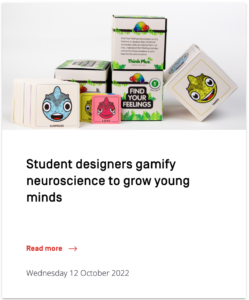See All Our Past Newsletters Here
ThinkPlus @EduTech 2023
.
The Power of Reframing to ‘Rewire’ Students’ Brains
2023 National Education Summit and Education Show
The Science of Growing Young Minds by Celia Franzè
Book Review: “Metacognition: Metacognitive Skill Building in the Australian Primary Classroom”
Student Agency and Neuroplasticity
Teacher Confidence
Student designers gamify neuroscience to grow young minds
Design Principles, Emotional Goals and Learning – Definitions and Links
selected by Celia Franzè
Guiding Students to Develop a Flexible Mindset
by Susannah Cole and Julie Dunstan
How to get students thinking about their own learning
What is the Science of Learning?
